Great Design Plant: Beavertail Prickly Pear Wows With Color
http://decor-ideas.org 07/09/2014 23:14 Decor Ideas
Take a walk through the desert in spring or early summer, and you’ll halt at the sight of vivid magenta flowers bursting forth from this medium-size prickly pear. Beavertail prickly pear’s lack of long spines and presence of attractive gray-blue pads are just a few more reasons desert dwellers will be hurrying to find a place in their landscape to plant this lovely cactus.
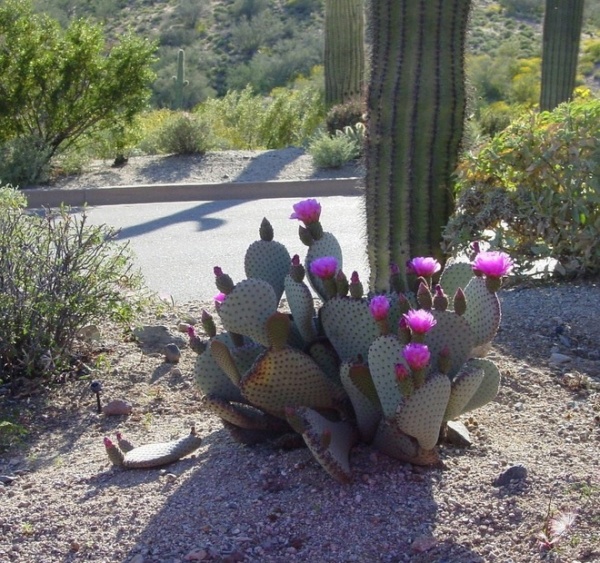
Botanical name: Opuntia basilaris
Common name: Beavertail prickly pear
Origin: Native to the desert regions of Arizona, California, Nevada and southern Utah as well as the northern region of Mexico
Where it will grow: Hardy to 10 degrees Fahrenheit (USDA zone 7; find your zone)
Water requirement: Low
Light requirement: Full sun
Mature size: 3 feet tall and 4 to 5 feet wide
Benefits and tolerances: Extremely drought tolerant once established; although it can survive without supplemental irrigation, watering deeply twice during the summer (in the absence of rain) will improve its growth and springtime flowering
Seasonal interest: Magenta flowers in spring through early summer
When to plant: In spring or fall, from transplants or from a single prickly pear pad
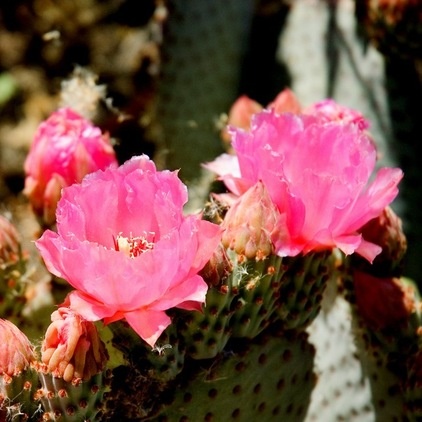
Distinguishing traits. During spring the vivid magenta flowers get all of the attention. The flowers contrast beautifully with the gray-green pads.
The flowers are just one reason to add this cactus to your desert garden. Like all cacti, beavertail prickly pear is a succulent and stores water in its pads. As its common name infers, the pads are shaped like a beaver’s tail (although it is unlikely you will ever see a beaver living where this prickly pear grows).
The pads are approximately 6 inches long and 4 inches wide. Unlike some other prickly pear species, this one does not become a huge, overgrown mass. It has a neat growth habit, reaching approximately 1 foot high and up to 4 feet across in size.
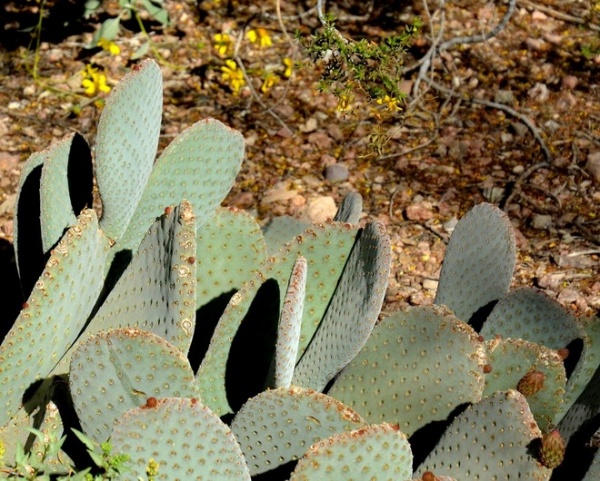
This prickly pear does not have long spines, but don’t be fooled by its relatively smooth appearance — the pads are covered with tiny bristles, called glochids. These glochids are extremely irritating and can embed themselves in your skin once they’re brushed off the plant.
Gloves won’t protect you from the glochids, and you’ll ruin your gloves. If you have an unfortunate encounter with a prickly pear, spread white glue on the skin with the embedded glochids and let it dry. Then peel the glue off, which should pull the glochids out. Or try duct tape to pull the glochids out.
However, as with many things, prevention is the best advice — so don’t touch the pads in the first place. Use tongs, multiple layers of newspaper or carpet remnants to pick up pieces of prickly pear.
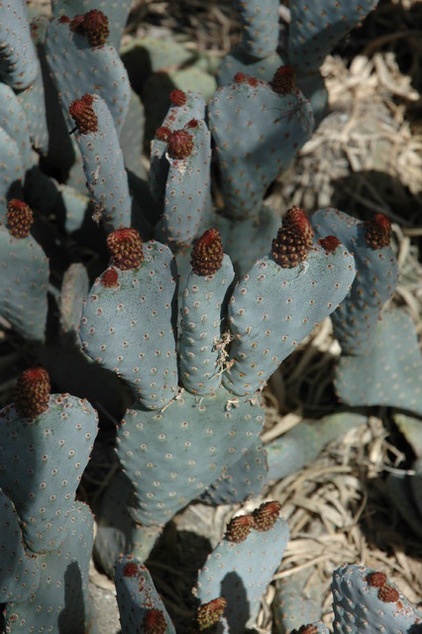
There are several varieties of beavertail prickly pear, including Trelease’s beavertail prickly pear (Opuntia basilaris var. treleasei), which is found only in the Bakersfield region of California.
Shown: New growth on a beavertail prickly pear
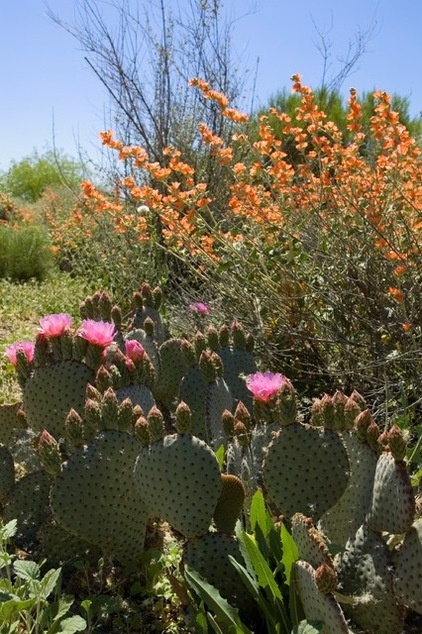
How to use it. Beavertail prickly pear is at home in a desert landscape, where its gray-blue pads can provide great color contrast when planted near plants with darker foliage. Pair it with desert marigold, globe mallow or Gooding’s verbena (Glandularia gooddingii) for a natural, colorful flower display in spring.
Beavertail prickly pear can also be planted in re-created natural desert settings along with triangle-leaf bursage (Ambrosia deltoidea), saguaro cacti (Carnegiea gigantea) and cholla species.
Use it in the outer areas of the landscape, where people won’t get accidentally stuck with the irritating bristles.
Shown: Beavertail prickly pear growing in front of orange-flowering globe mallow (Sphaeralcea ambigua)
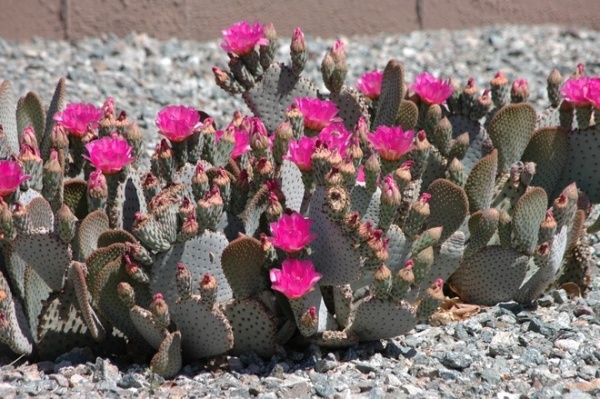
Planting notes. Plant it in well-drained or rocky soil. Avoid planting in heavy clay soils, where the roots may rot. Beavertail prickly pear needs full sun to grow best.
Water twice a month during the first summer after planting. While it can survive on rainfall alone, watering once a month in spring through fall in the absence of rain will help with its growth rate and flowering. Watch for signs of shriveled pads, which is a sign of drought stress.
See more guides to growing low-water succulents
Related Articles Recommended












